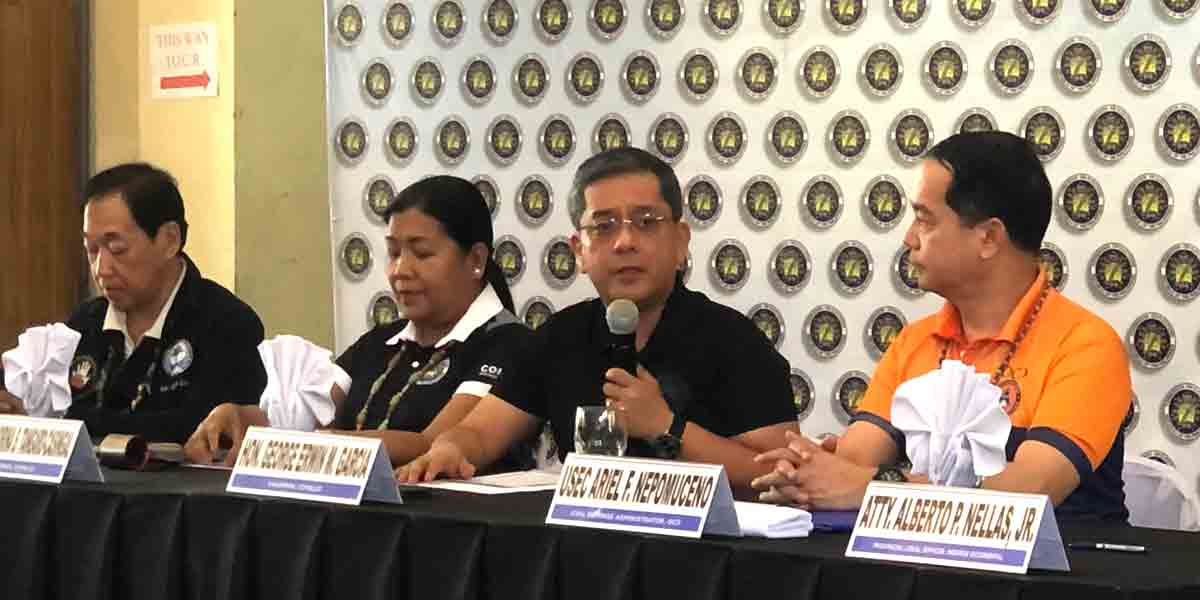
By: Emme Rose Santiagudo
FARMERS and other stakeholders in the agriculture sector raised fears over the adverse effects of the Rice Tariffication Law on the rice industry after it was signed by President Rodrigo Duterte in February 2019.
The government has since allayed the fears of farmers through consultations with stakeholders and agencies.
Department of Agriculture (DA) Secretary Manny Piñol on Friday headed the Visayas leg of the national consultation for RA 11203 or Rice Trade Liberalization Law at The Mansion, Iloilo City.
The forum, which aims to explain the salient features of the Implementing Rules and Regulations (IRR) of the law, gathered different stakeholders from all over Visayas.
UNDERSTANDING THE CONCEPT
Rice tariffication, which involves the imposition of tariffs on imported rice coming into the country, is the commitment of the Philippines to the World Trade Organization, according to Piñol.
Piñol added that before, the volume of rice coming into the country were limited because of the quantitative restriction.
Before we were limiting the volume of imported rice in the country, we have the quantitative restriction. We could bring in imported rice but because we want to protect our farmers ginlimitahan naton asta sa 805,000 metric tons ang pwede lang sa maximum volume, he said.
The limit, according to Piñol, affects the price of rice in the market.
If you have limited supply of rice in the lean months, tataas yung supply of rice, he said.
Under the new law, the Philippines will lift the quantitative restriction and allow the entry of imported rice with tariffs, which is 35 percent per ton of rice from Association of Southeast Asian (ASEAN) countries and 50 percent from non-ASEAN countries.
If importation threatens the rice industry in the country, Piñol said the President can increase the tariff to 180% on rice from countries outside ASEAN region.
Beyond 50% pwede magpasaka ang president up to 180%, the moment magbaha ang bugas sa Pilipinas and the President sees that its already a threat to the survival of the rice industry he would increase the tariff, he said.
The new law would also limit the role of the National Food Authority, which is now limited to buffer stocking for calamities and emergencies.
Another catch in the new law is that tariffs will go to the Rice Competitiveness Enhancement Fund (RCEF) the farmers and the rice industry, Piñol said.
P5 billion will be allocated to the mechanization program, P3 billion for the development and procurement of inbred seed varieties, P1 billion for credit program, and P1 billion for technical trainings of rice farmers, he added.
LACK OF SAFETY NETS FOR FARMERS?
But some farmers argued that the new law lacks safety nets for Filipino farmers.
During the forum, Raul Montemayor, national manager of Federation of Free Farmers Inc. (FFF), asked interventions from the government to assure that farmers will be protected.
Nag-propose ng tarrification hindi yun naiisip na pwedeng mangyari to, sana i-address yung pangamba ng magsasaka at ilagay sa IRR yung mga safety nets, he said.
Lorenzo Provido Jr., treasurer Philippine Farmers Advisory Board, fears the lack of regulating body that will protect small farmers.
Wala sang agency nga mag-protect sa rice farmers, yan ang bottomline. Ang NFA ibinubuwag na, he said.
With the entry of imported rice, Provido lamented farmers would compete by lowering rice prices.
Kinakabahala naming yung pagpasok ng imports, kompetisyon yun eh talagang magkokompentinsya sa presyo indi sa pagtaas kundi sa pagbaba para maibenta, he added.
Provido also fears that the collection of rice tariffs will not serve its purpose and instead will be pocketed by corrupt officials.
Yung collection ng rice tariff will create a rice fund, ang hirap kung talaga pupunta sa right beneficiaries baka ibulsa ulit. Tingnan mo yung coconut levy fund walang coconut farmer na nakinabang dun, sana maibigay sa tamang sector at hind maging corrupt ang gobyerno, he stressed.
WHAT HAPPENS TO RETAILERS?
Grains Retailers Confederation of the Philippines Inc. (GRECON) national president Jaime Magbanua said retailers nationwide also fear that they will be displaced once NFA stops selling government subsidized rice.
Pag-stop sang NFA sang government subsidized rice, ma-displace and dedicated outlet namon nga mga retailers nationwide, and there are about 20,000 outlets nationwide nga ang ila nga ginabaligya solely puro lang NFA rice, he said.
Magbanua said the government should assure that farmers will not be affected and not discouraged to plant rice.
Indi lang tani maapektuhan ang farmers kay kon indi pagbuligan, indi na magtanom, he said.
He added that the country should not rely on imports and instead should focus on production side at cheap cost.
Kay dapat produce our own food kag indi kita magsalig. We have to focus on the production side, para makaproduce kita damo and cheap ang production cost para makacompete kita with other countries, Magbanua added.
ASSURANCE
All the fears, doubts, and suggestions will be evaluated and considered, Piñol assured.
Piñol said information drives and consultation all over the country aims to assure farmers that the agriculture department will help them and letting them understand the effects of the Rice Tariffication law.
The purpose of this consultation is not only to explain the law but also to give you the perspective of where the industry is going, and to calm your fears and doubts, he said.
SHORT SILENT EFFECT
According to Piñol, the idea of relying on imports from Thailand, Vietnam, Cambodia and other rice producing countries for our rice supply is a short silent effect.
The fear of opening the market with imported rice will not end the rice industry of the country, Piñol said.
In the long run, five years from now, things will level up and their will not be enough rice supply in the country if we will not import rice, he said.
Citing the 12.7% growing population of the country per year, Piñol said the country needs to irrigate 80,000 hectares per year to feed the growing population.
We need to irrigate 80,000 hectares per year to feed the growing population, but right now ang ating irrigation 30,000-40,000 short tayo, he said.
Since Thailand, Vietnam and Cambodia also have growing populations, Piñol argued that there will come a time that they can no longer export the same volume of rice.
With their growing population, a time will come where they will no longer export the same volume of rice because they also need to feed their growing population, he added.
He added that the agriculture sector now is not only focusing producing food for today but securing food for the next generation.
We have to continue planting rice because five to 10 years from now, there will not be enough rice supply for the country if we rely on imports. If we abandon this industry, hindi ang industriya ng palay ang mamamatay, yung ating mga anak at apo ang mag sasakripisyo, Pinol stressed.




















